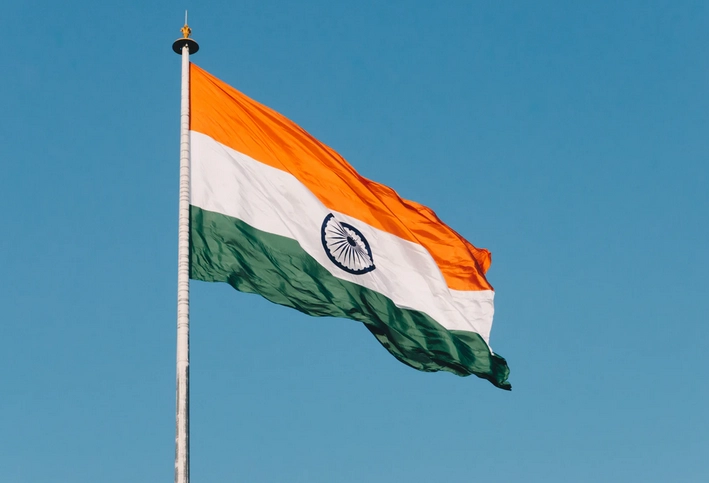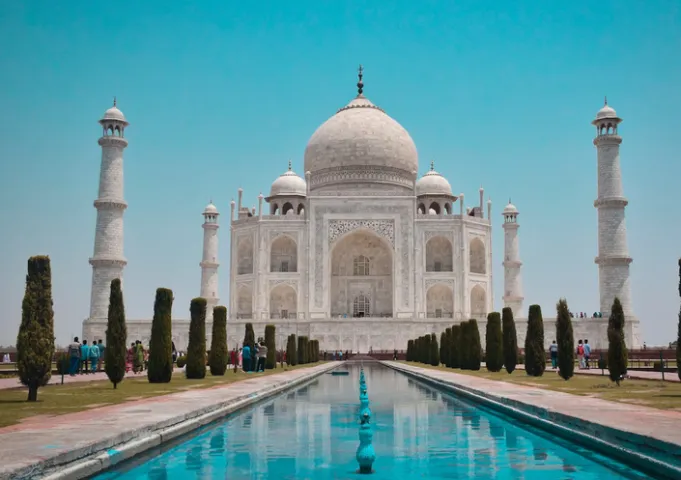The Taj Mahal is a world-famous mausoleum located in Agra, India. The landmark translates into English as the ‘Crown of the Palace’.
The landmark is one of the most instantly-recognisable sights around the world. The site is one of India’s most popular tourist attractions, with around 7million visitors each year visiting the stunning landmark.

Background
The mausoleum was commissioned in 1632 by Mughal emperor Shah Jahan – with the intention of housing the tomb of his wife Mumtaz Mahal.
The tomb to this day is the centerpiece of the complex – both literally and figuratively. Construction finished on the site in 1643.
The Taj Mahal was designated as a UNESCO World Heritage Site in 1983, and is widely regarded as a cultural emblem of India.
Construction of the Taj Mahal
The Taj Mahal was built in 1632. By 1643, the first phase of construction had been completed. Work would continue for a further ten years.
The construction used 20,000 workers, with 1,000 elephants used to transport materials. These materials came from all over Asia – including China, Sri Lanka, and Saudi Arabia. The intention was to house the tomb of Mahal – this was implemented successfully.
The complex spans an impressive 42 acres. Within the complex is the main tomb, a mosque, and a guest house among other facilities – all of which are contained in gardens. The gardens feature many trees and fountains.
The complex features many passages from the Qur’an. Great care was taken with the interior design – and when visiting, tourists can’t help but marvel at the stunning design.
Outside the main complex, more mausoleums are situated, which contain other wives of emperor Jahan’s!
The tomb is the main part of the Taj Mahal – and is the most recognisable point of the complex. As mentioned earlier, it is the centerpiece of the complex.
It is a large white marble structure – which took inspiration from Persian architecture. The four blocks bordering the tomb are minarets.
The remains of Mumtaz Mahal are housed in the tomb – she died giving birth to the 14th child of Jahan. As seen with similar structures made around this time – the design was years ahead of its time.
As you can imagine from all of the effort put into the project, the cost was huge. To put the cost into context – the project cost the equivalent of $905m in 2024.
History of Taj Mahal
Following the construction, the Taj Mahal was under the control of India. However, the Taj Mahal hasn’t always been under Indian control.
By the close of the 19th century, the British Empire had seized control of India and assumed control of the Taj Mahal.
Some disrepair would emanate from British control. The design of the garden was also changed to match a London-based style – something which has remained ever since.
India eventually secured control of the Taj Mahal again. A restoration project in the 1900s restored the site to its previous glory. Long-term concerns at the building revolve around structural integrity.
Visiting the Taj Mahal
In terms of visiting as a tourist – there are some important things to mention. The peak season is between October and February – due to the cooler temperature.
There are strict restrictions on pollution in the area. Therefore, visitors must walk from a nearby car park, or catch an electric bus – which can take you near the site.
The grounds are open for the majority of the day, though religious events take precedence over tourist visits. Foreign tourists pay a much higher entry fee than Indian nationals.
At the time of writing, only a few items are permitted in the Taj Mahal; a clear water bottle, small video camera, normal camera, mobile phone and small purse. Nothing else is accepted.
The Takeaway
The Taj Mahal has been called the ‘jewel’ of Muslim art in India, and a ‘universally admired’ masterpiece.
In 2007, the Taj Mahal was named one of the New7Wonders of the World – highlighting its reputation worldwide. This is a location well worth visiting!

















































